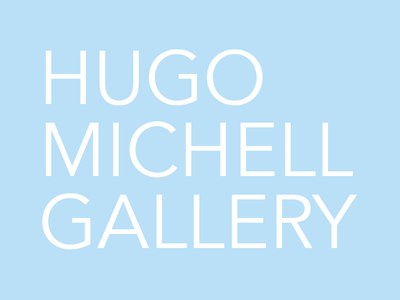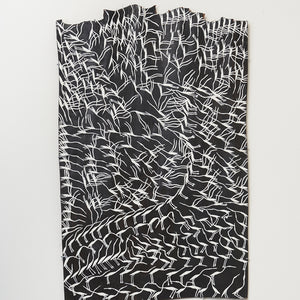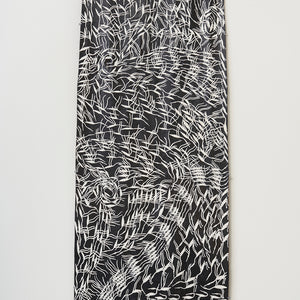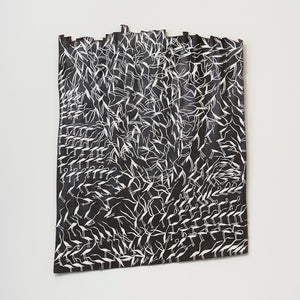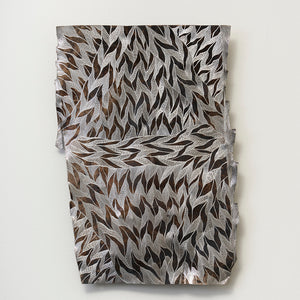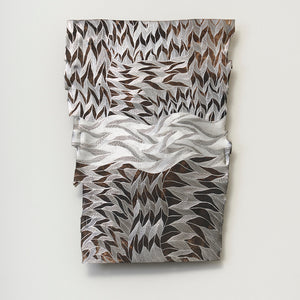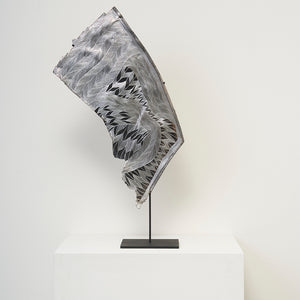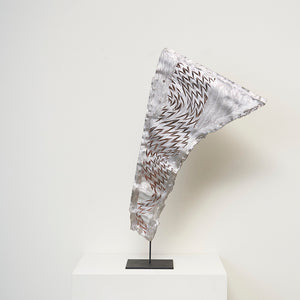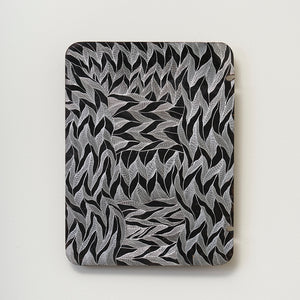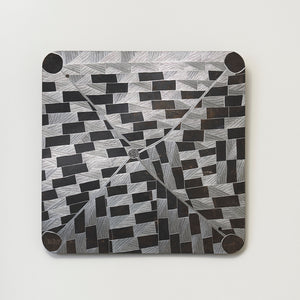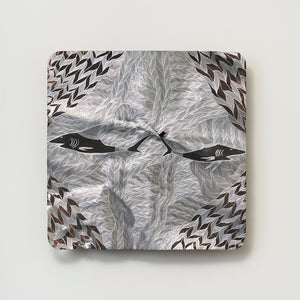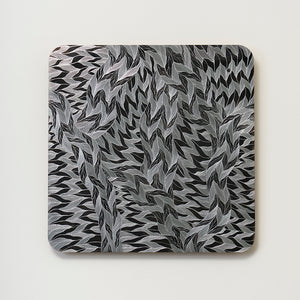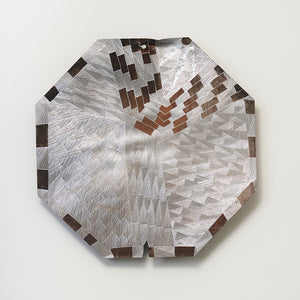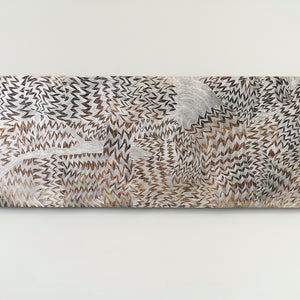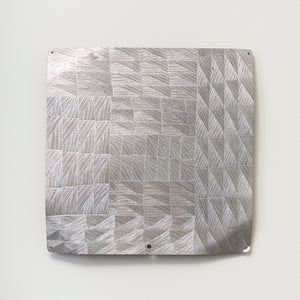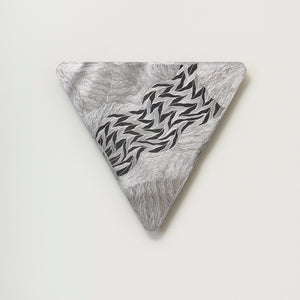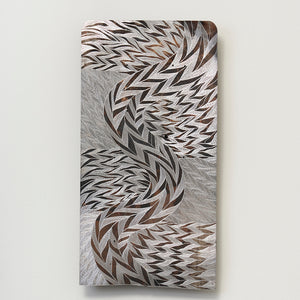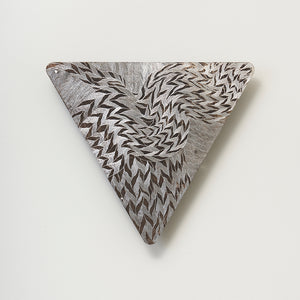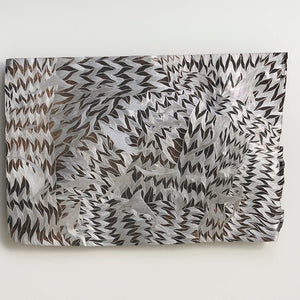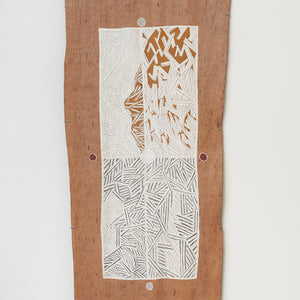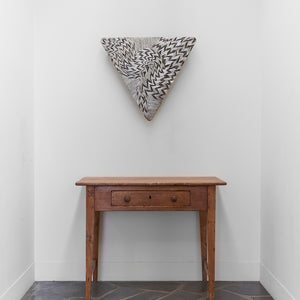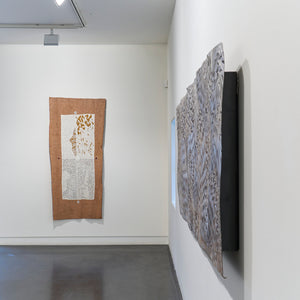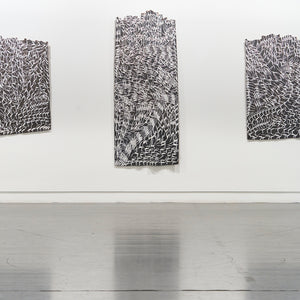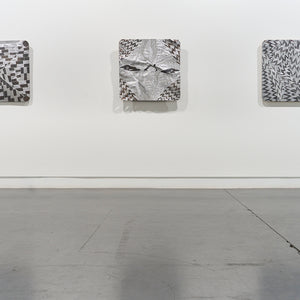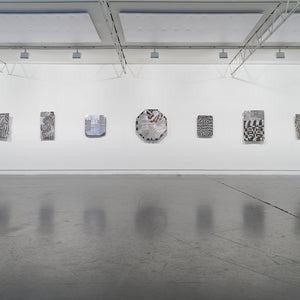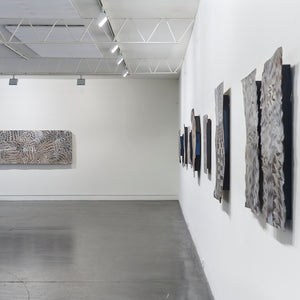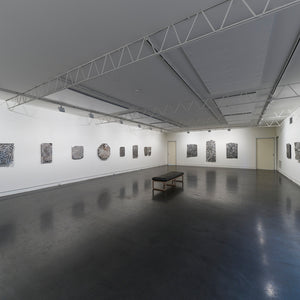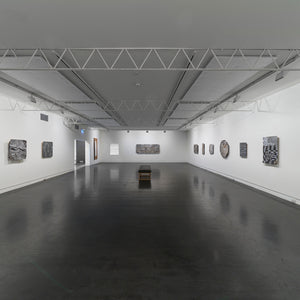Binygurr Wirrpanda DANCING BROLGAS
12 September to 5 October 2024
Dancing Brolgas
by Will Stubbs
If you see the classic Rolling Stones logo of lips and a tongue it triggers you to think of the band and its songs. If you follow that logic and sit down to hum through and write out all the lyrics you can remember you might be surprised at the volume of text you can generate.
Non-Boomers should please adjust this example to suit your own generation - if there is a corollary.
This is broadly what is happening in the classical renditions of Yolŋu[1] miny’tji or dhulaŋ- sacred clan design. Believe it or not, a ‘literate’ songman can ‘read’ the patterns to stimulate the memory of huge amounts of poetic text.
Each particular pattern carries the essence of an estate of land which is held in the hundreds of songs which are encoded in that design. These epic song cycles are a cross between poetry and the Latin Mass. They retell the movements of ancestral forces through the landscape. These texts are similar to the Odyssey which describes the geography of the Mediterranean through the adventures of Odysseus.
Knowledge of these songs and the designs which encode them is indicia of title over that estate. This explanation is probably more confusing than it needs to be but it is trying to establish two things; the sacred designs are a way of pointing to the songs; and the songs are dense texts of a poetic nature which act as title deeds.
When Yolŋu and European intellectuals first collided in the 1930s it was automatic for the Yolŋu to show their respect and warmth towards the outsiders by gifting these diplomatic symbols of identity as a way of cementing life-long alliances with the newcomers. It was just as natural for the Europeans to take these objects away to trade and display and never return.
This disconnect caused a spasm of shock in the Yolŋu world who introduced a set of conventions which persisted into the late 1990s. A hard distinction developed between ceremonial art and that which could be shared with the visitors. Commonly this difference was achieved by extracting figurative imagery from the song text and plastering it over the patterns which contained that text. This ‘protected’ uninitiated viewers from the power of the unadulterated pure designs.
Over time, as artists grew up under this artistic regime and within the mission system, the compositions became quite formulaic. The rendition of the works through the 1980s seemed to follow increasingly rigid almost mechanistically repetitive forms. Conservatism prevailed.
Since the inception of the Yirrkala Print Space in 1995 and the Saltwater Collection of 1998 there has been a freeing up of this convention. This is largely borne of the confident leadership of artists like Djambawa Marawili AM and Gunybi Ganambarr who encouraged their peers to take the authority of the Law into their own hands when portraying their land and its identity. To reinvent the wheel whilst observing the logic of the Law.
Today’s artists are no longer looking over their shoulder towards the ‘first contact generation’ with the same timidity as their fathers and grandfathers. They still follow the strict template of each design but with fluidity and innovation.
Binygurr’s exhibition is a beautiful example of the current high point of that evolution of artistic expression within the Yirrkala school. It seems to raise the question of how the change from bark to metal has impacted upon the actual arrangement of the elements within each artwork. Each time the artists have jumped into a new media (such as printmaking) the shackles of those compositional conventions have loosened. I have never seen a series of barks to match the freedom of the works in this show. The flow and rhythm is unrecognisable from previous barks covering the same topic.
The interplay between the two media and the way it has affected the composition of these barks is an unanticipated outcome of the spirit of adventure and authority this generation enjoys. Where once a stilted bird would have stood large flocks of Brolgas have literally taken flight. They now dance across the bark as they dance across the landscape in real life.
Will Stubbs - coordinator at the Buku-Larrnggay Mulka Arts Centre in Yirrkala, NT,
[1] The name of the First Nations people who are the landowners for Eastern Arnhem Land.
Enquiries to mail@hugomichellgallery.com
